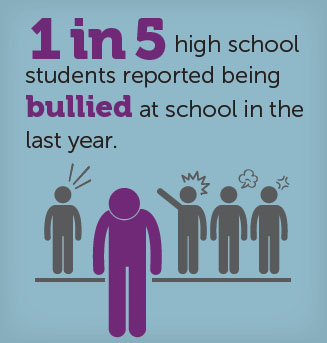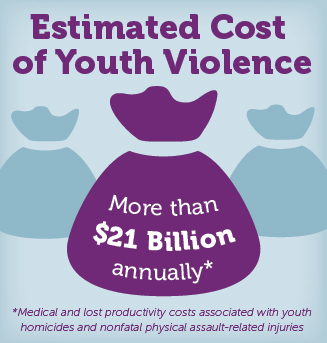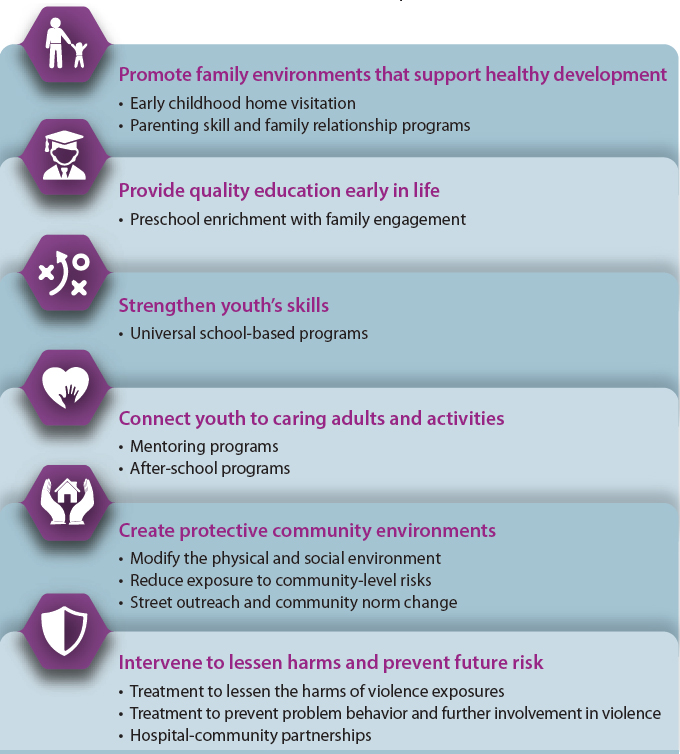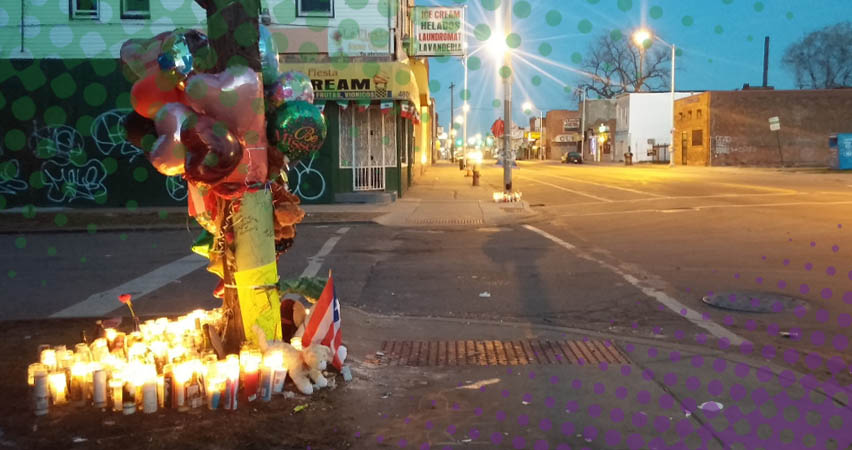Community Violence

Youth violence is common.
Nearly 1 in 5 high school students reported being bullied on school property in the last year, and about 1 in 7 were electronically bullied (texting, Instagram, Facebook, or other social media).
Violence kills and injures.
Homicide is the 3rd leading cause of death for young people ages 10-24. Each day, about 14 young people are victims of homicide and about 1,300 are treated in emergency departments for nonfatal assault-related injuries.


Violence is costly.
Homicides and nonfatal physical assault-related injuries result in more than $21 billion annually in combined medical and lost productivity costs alone. This does not include costs associated with the criminal justice system, psychological and social consequences for victims, perpetrators and their families, or costs incurred by communities.
Violence is preventable!
There are many successful strategies and approaches to shape individual behaviors as well as the societal factors that influence risk and protective factors for violence.

“The ultimate weakness of violence is that it is a descending spiral; returning violence with violence multiplies violence, adding deeper darkness to a night already devoid of stars”.
Rev. Dr. Martin Luther King, Jr.
References:
David-Ferdon C, Vivolo-Kantor AM, Dahlberg LL, Marshall KJ, Rainford N, Hall JE. A Comprehensive Technical Package for the Prevention of Youth Violence and Associated Risk Behaviors. Atlanta, GA: National Center for Injury Prevention and Control, Centers for Disease Control and Prevention, 2016. Available from https:// www.cdc.gov/violenceprevention/pdf/yvtechnicalpackage.pdf.
Kann L, McManus T, Harris WA, et al. (2018). Youth Risk Behavior Surveillance—United States, 2017. Morbidity and Mortality Weekly Report–Surveillance Summaries; 67(SS-08):1-479. Available from https:// www.cdc.gov/healthyyouth/data/yrbs/ pdf/2017/ss6708.pdf.
Centers for Disease Control and Prevention, National Center for Injury Prevention and Control. Web-based Injury Statistics Query and Reporting System (WISQARS) [online] 2017; [cited 2019 Feb 27] Available from www.cdc.gov/injury.


